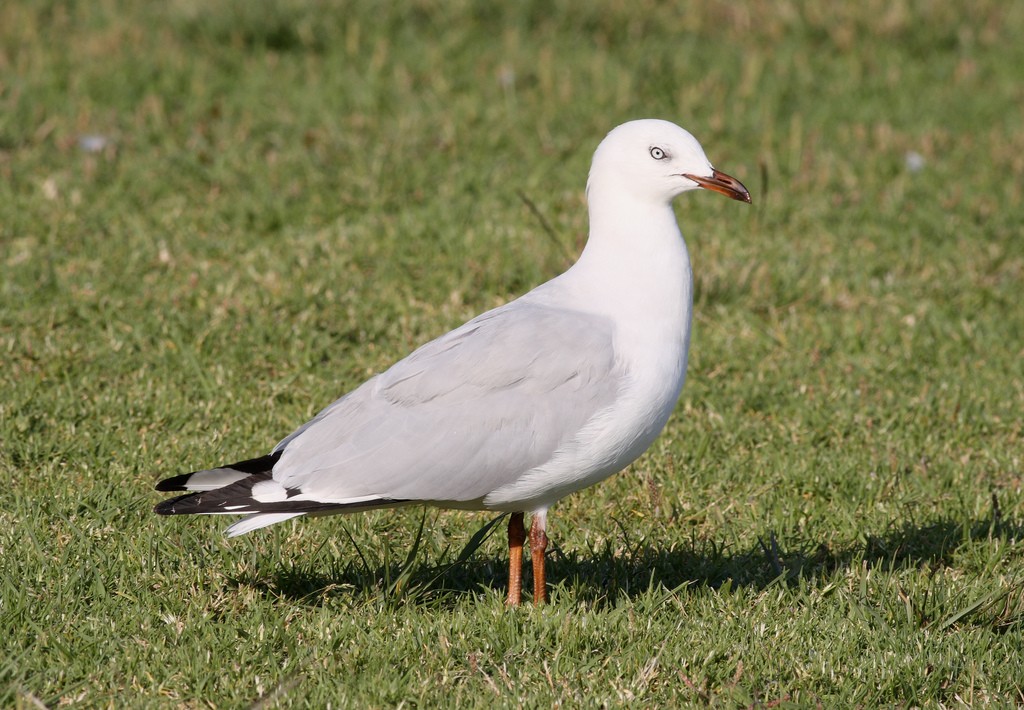Silver Gull
A species of Masked Gulls Scientific name : Chroicocephalus novaehollandiae Genus : Masked Gulls
Silver Gull, A species of Masked Gulls
Botanical name: Chroicocephalus novaehollandiae
Genus: Masked Gulls
Content
Description People often ask General Info
Description
The head, body, and tail are white. The wings are light grey with white-spotted, black tips. Adults range from 40–45 cm in length. Mean wingspan is 94 cm. Juveniles have brown patterns on their wings, and a dark beak. Adults have bright red beaks—the brighter the red, the older the bird. 
Size
40 - 45 cm
Life Expectancy
11 years
Nest Placement
Ground
Feeding Habits
Silver Gull mainly consumes worms, fish, insects, and crustaceans. As an adaptable forager, it scavenges effectively, thriving near human populations. No peculiar dietary adaptations noted.
Habitat
The silver Gull primarily thrives in coastal areas, utilizing sandy and rocky shores, and adapts well to urban environments including parks and beaches. It nests on low-vegetation islands and frequents inland habitats such as freshwater lakes and brackish waters. Human activity, such as waste from shopping centers and dumps, supports its population. The silver Gull may also inhabit inland agricultural fields and even areas at elevations of up to 900 meters.
Dite type
Omnivorous
People often ask
General Info
Feeding Habits
Bird food type
Behavior
The silver gull has a sharp voice consisting of a variety of calls. The most common call is a harsh, high pitched 'kwarwh'. 
Distribution Area
Silver gulls are found in all states of Australia, as well as New Zealand and New Caledonia. Silver gulls have twice been recorded in the United States; one bird was shot in August 1947 at the mouth of the Genesee River, Lake Ontario, and another was photographed in Salem County, New Jersey, in autumn 1996. 
